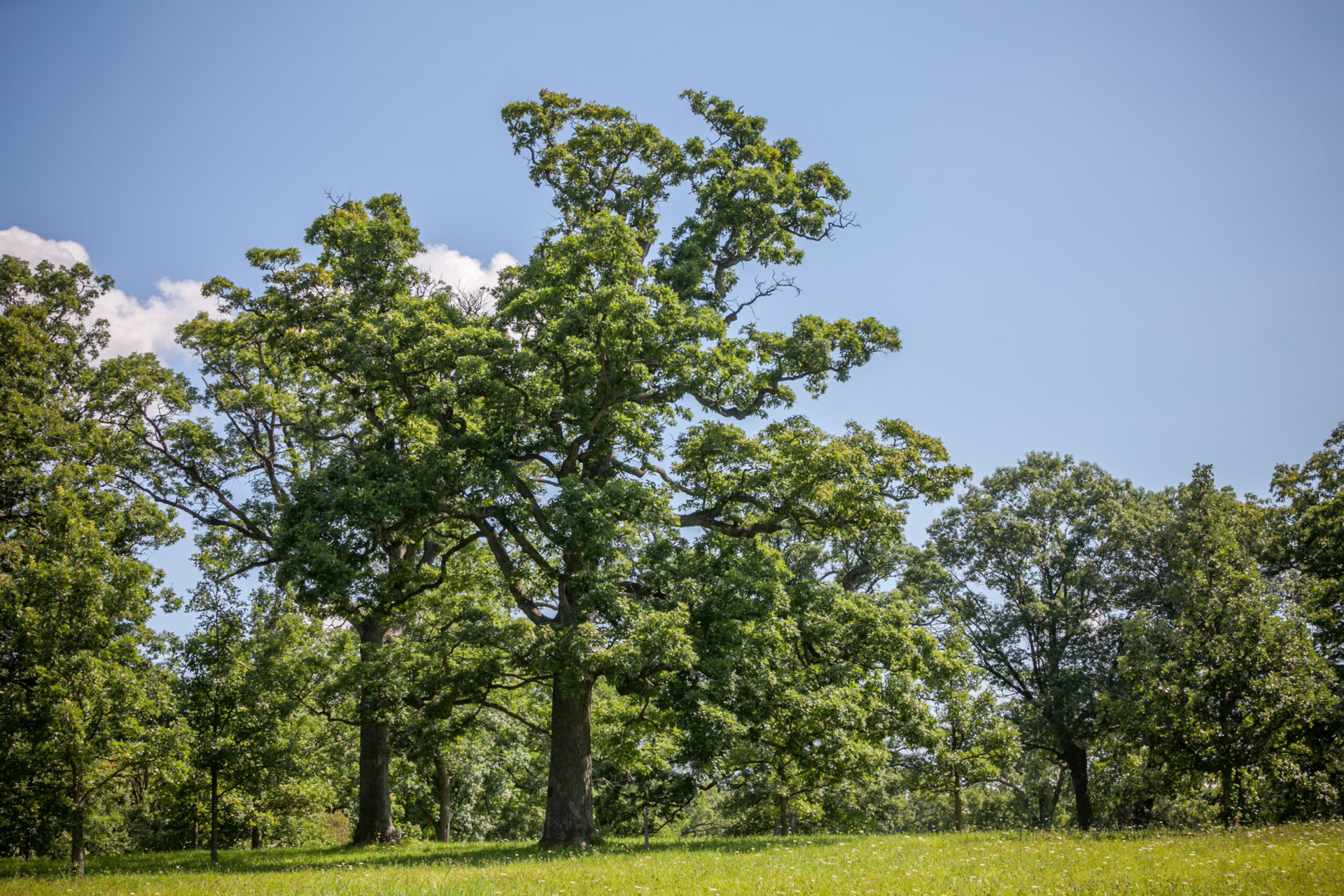CHICAGO (April 13, 2023) — Scientists at four leading Illinois research institutions, three in the Chicago region, are forming a new collaboration to study the effects of drought on urban trees and develop more effective drought response strategies nationwide through a grant from the National Oceanic and Atmospheric Administration (NOAA).
The project is being led by researchers at The Morton Arboretum in conjunction with the U.S. Department of Energy’s Argonne National Laboratory, the University of Chicago and the Illinois State Water Survey at the Prairie Research Institute.
“With the ongoing effects of climate change likely to make droughts and excessive heat events more common, healthy urban trees will play an increasingly important role in helping mitigate impacts on people’s lives,” said Christy Rollinson, Ph.D., the Arboretum’s forest ecologist and principal investigator on the project. “Trees provide a wealth of valuable ecological services, such as helping to keep cities cooler in the summer and absorbing groundwater to mitigate flooding.”
Those services make trees essential to a community’s capability to be resilient to the impacts of climate change. Negative climate change impacts include extreme weather events and flooding. According to M. Ross Alexander, Ph.D., assistant operation research analyst in Argonne’s Decision and Infrastructure Sciences division and scientist at large in the University of Chicago Consortium for Advanced Science and Engineering, “A mature oak tree can pump through 50 gallons of water a day. That is water that will not go down the sewers. If a tree experiences hard droughts or multiple droughts, this functionality could be impaired.”
The research enabled by the grant has three components focused on data gathering, action plans and creating guidelines for improved drought resilience in urban communities. After determining the common drought monitoring indices most associated with tree-scale drought response across the Chicago metropolitan region, the institutions will then partner with tree care professionals and residents to develop a multi-tiered recommendation and action strategy for communities to reduce the impacts of ecological drought on trees and plants. Finally, they will create guidelines for targeted tree planting strategies that will increase near- and long-term drought resilience in urban communities. This project will take place over the next two years.
“Droughts have typically been studied in an agricultural context,” Alexander said. “We want to add a new lens to the study of drought and see how drought can affect different ecosystems.”
“This project will greatly enhance our ability to monitor and provide an early warning for ecological drought impacts in real time, and provide useable information for decision makers in charge of urban tree management,” said Trent Ford, Ph.D., Illinois State Climatologist at the University of Illinois. “Through this partnership with The Morton Arboretum and Argonne, we’ll also be able to better inform urban tree planning to be more resilient to climate change now and into the future.”
The grant will also enable new ways of thinking, including creating a new early warning system for urban droughts. “By modeling near-term drought risk, we can start to determine the types of trees that will be able to withstand low-water conditions for different periods of time,” Rollinson said. “So when drought strikes urban areas, communities will be more prepared to mitigate its impacts.”
Changes in the urban arboreal landscape due to climate change and other risk factors like insect infestations or blight have led researchers to be forward-thinking about the kinds of trees that will perform best under different types of stressors, and that will meet a community’s long-term needs.
The study will be conducted in conjunction with urban planners and urban tree care professionals to help the researchers understand what is being planted and the care trees are currently receiving. “The urban ecosystem is complex,” Rollinson noted. “We want to understand how urban trees operate and interact within their environment to ensure we can properly care for them and that they’re effective when we need them most during stressful drought periods.”
Funding for the work is provided by the NOAA Climate Program Office, through NOAA’s National Integrated Drought Information System.
